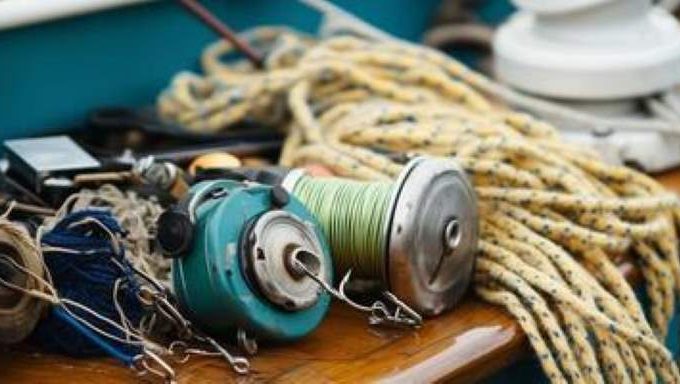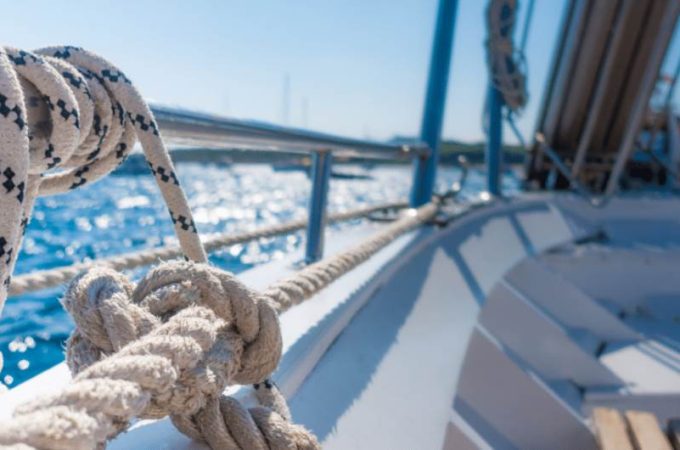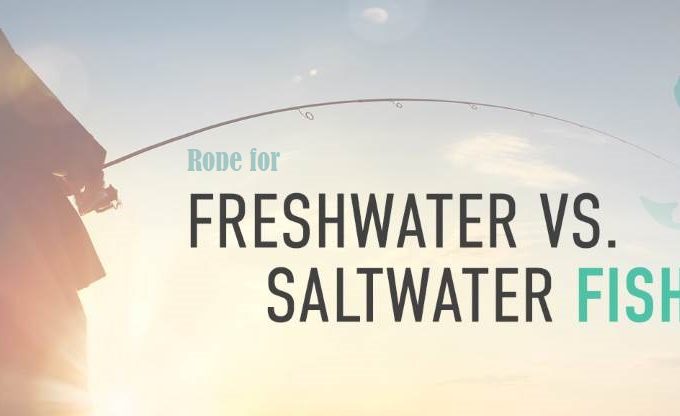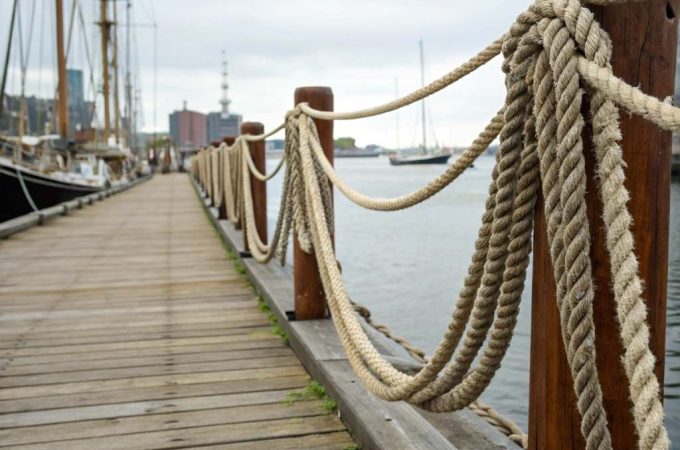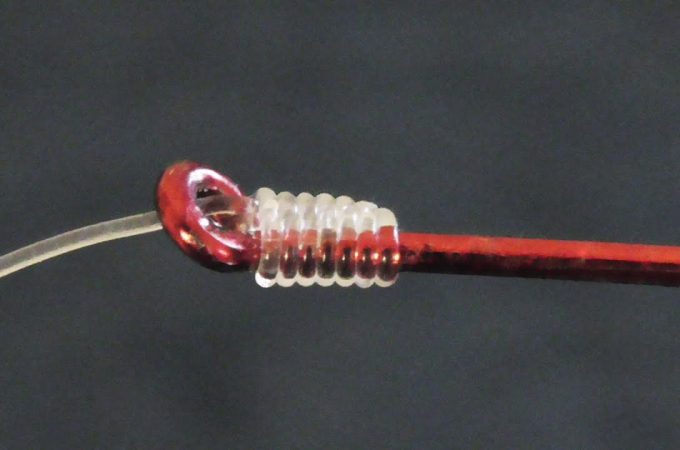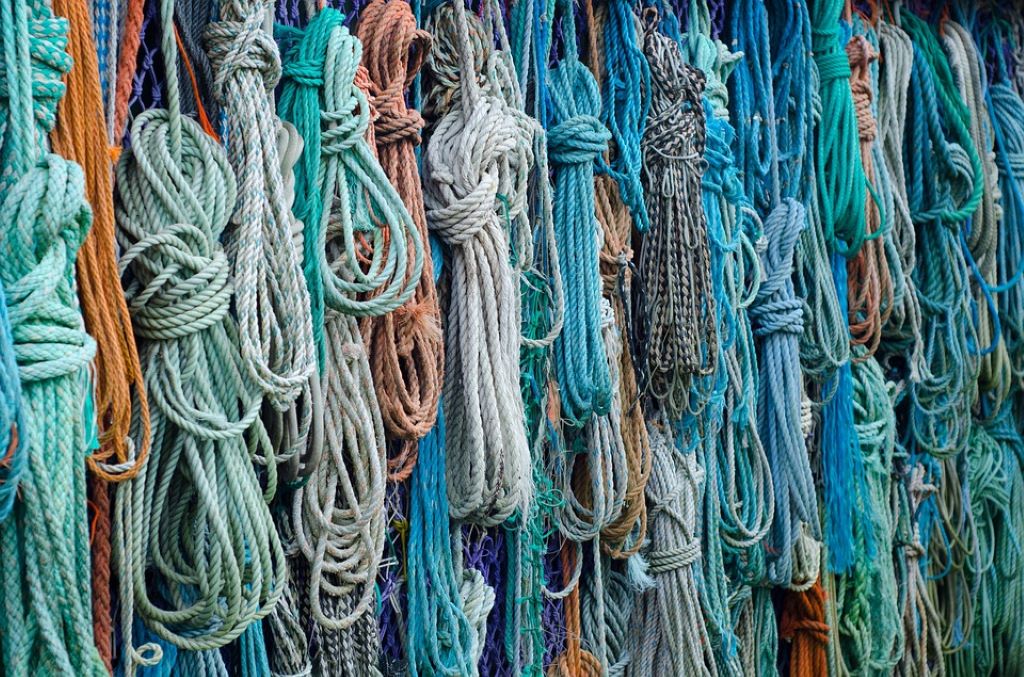
How to Maintain Your Fishing Rope: Unbreakable Tips!
Maintain your fishing rope by regularly cleaning and drying it. Store it properly to avoid kinks and coils. For anglers and seafarers, the durability of fishing rope is quintessential to successful outings and safety. Regular maintenance ensures that the rope performs optimally and withstands the harsh marine environment. Sun, salt, and strain are the biggest adversaries of your fishing rope’s integrity.
Contents at a Glance
ToggleA well-kept rope can mean the difference between a bountiful haul and returning to shore empty-handed. This introduction to maintaining your fishing rope for maximum longevity will provide essential tips that are practical and easy to implement, ensuring that your fishing expeditions are never compromised by failing equipment. By integrating these simple practices into your routine, you can extend the life of your fishing rope, save money, and maintain the highest safety standards.
The Importance Of Rope Maintenance For Anglers
Rope maintenance is crucial for anglers. Good rope care ensures longevity and safety. Regular upkeep prevents wear and tear. Proper techniques keep the rope strong for every fishing trip.
Maximizing Durability
Long-lasting ropes require consistent care. Follow these tips to maximize your fishing rope’s life:
- Wash saltwater off after each use.
- Dry your rope completely before storage.
- Store in a cool, dry place away from sunlight.
- Check for frays or weak spots often.
- Coil properly to avoid kinks.
Ensuring Safety On Water
Maintained ropes mean safer fishing adventures. Adhere to these practices:
- Inspect rope before each outing.
- Replace ropes with signs of significant wear.
- Learn knots that hold tightly and release quickly.
- Keep ropes clear of sharp objects.
- Use the right rope for the job to prevent accidents.
Types Of Fishing Ropes
Knowing about the types of fishing ropes is key to their maintenance. Various ropes have different features. Each type suits specific fishing environments and tasks. It’s essential to choose the right rope to ensure it lasts longer.
Common Materials Used
Fishing ropes come in multiple materials, each with unique benefits. Durability and strength are crucial factors. Here’s a breakdown:
- Nylon: It stretches and resists abrasion. Great for shock absorption.
- Polyethylene: It floats and works well for nets and lines.
- Polypropylene: Another floating rope, ideal for buoys and markers.
- Manila: A natural fiber, perfect for knot strength but less resistant to mold.
Choosing The Right Rope For Your Fishing Needs
Selecting the right rope depends on your fishing style. Think about these points:
| Feature | Importance |
|---|---|
| Strength | For heavy catches, choose strong, durable ropes like nylon. |
| Floatation | Surface fishing? Polyethylene or polypropylene is best. |
| Water Absorption | Nylon dries quickly, preventing rot and mold. |
| Eco-Friendliness | Choose manila for a biodegradable option. |
Remember, the right rope can enhance your fishing experience. It makes your activities safer and more efficient.
Initial Inspection And Purchase Tips
Initial Inspection and Purchase Tips play a crucial role in ensuring the durability and performance of your fishing rope. Before casting your line, it’s essential to guarantee that your rope can withstand the challenges of the waters. A thorough check and informed choice can save time, money, and potential mishaps.
Quality Checkpoints
Quality should never be compromised when selecting a fishing rope. Look for these key indicators:
- Material: High-grade fibers like polyethylene or nylon suggest longevity.
- Construction: Braided or twisted? Braided ropes often offer superior strength.
- Coating: UV-resistant coating can protect from sun damage.
Strength And Flexibility Factors
Balance between strength and flexibility is critical. Consider these aspects:
- Load capacity: Check the breaking strength matches your fishing needs.
- Stretch: Some elasticity can be useful, but too much may reduce control.
- Handling: Ensure the rope feels comfortable and manageable.
Cleaning Steps For Your Fishing Rope
Fishing rope can last longer with proper care. Clean your rope regularly to maintain its strength. The following steps will guide you through removing salt and grime, as well as proper drying techniques, to ensure your fishing rope remains in top condition.
Removing Salt And Grime
- Rinse the rope with fresh water to wash away salt and small particles.
- For tougher residues, soak the rope in warm, soapy water for 30 minutes.
- Use a soft brush to gently scrub any dirty spots.
- Rinse thoroughly to remove soap and lingering grime.
- Never use harsh chemicals, as they can damage the fibers.
Proper Drying Techniques
Avoid direct sunlight when drying your rope to prevent UV damage. Follow these steps:
- After cleaning, gently squeeze the rope to eliminate excess water.
- Lay the rope in a neat coil on a flat surface in a shaded, well-ventilated area.
- Flip the rope occasionally to ensure all sides dry evenly.
- Store the rope only when it is completely dry to avoid mildew.
By following these simple cleaning and drying techniques, your fishing rope will stay strong and durable for many fishing trips to come.
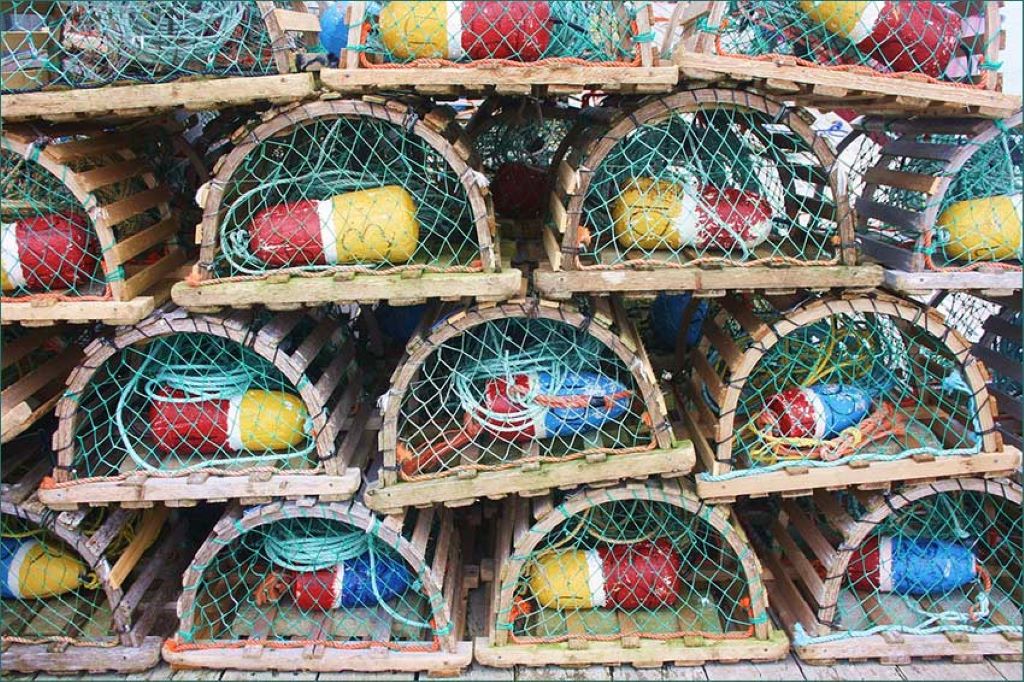
Storage Solutions To Prolong Rope Life
Storing your fishing rope properly is key to its longevity. Proper storage keeps the rope strong and reliable for every fishing adventure. Follow these storage tips to ensure your rope lasts as long as possible.
Ideal Storage Conditions
Store your fishing rope in a cool, dry place to prevent mildew and decay. Direct sunlight weakens fibers over time, so find a shaded spot. Hang ropes loosely to avoid kinks and ensure good air circulation. A dedicated storage rack or hook works best.
Avoiding Common Storage Mistakes
- Avoid storing ropes wet, as this can lead to mold and mildew.
- Don’t coil ropes tightly; this may cause permanent bends and weaken the rope structure.
- Keep ropes away from chemicals like oils, acids, and bleach.
- Separate different materials to prevent chemical reactions among rope fibers.
Following these guidelines will ensure your fishing rope remains dependable. A little care goes a long way in extending the life of your rope.
Regular Inspection Routine
Regular Inspection Routine is key to ensuring the durability of your fishing rope. By frequently checking your rope for any signs of damage, you extend its life and maintain optimal performance. An effective inspection routine includes examining the rope before and after each use. Read on to learn how to spot wear and tear and determine the right time for a replacement. Identifying Signs of Wear and Tear
Identifying Signs Of Wear And Tear
- Check for frayed strands or broken fibers.
- Look for discoloration or stiffness in the rope.
- Feel for any knots or kinks that could weaken the rope.
- Inspect for abrasions from rough surfaces.
- Ensure no chemical damage from oil or other substances.
Log your findings in a notebook or digital log. Keep track of areas to monitor closely.When to Consider Replacement
When To Consider Replacement
| Sign | Action |
|---|---|
| Severe fraying | Replace immediately |
| Consistent abrasions | Consider replacement |
| Stiffness impeding performance | Time for a new rope |
| Mild discoloration | Monitor and test strength |
If multiple signs of wear appear, don’t hesitate to replace the rope. Prioritize safety over cost to prevent accidents. Early rope replacement can prevent gear failure and potential accidents.
Related: TOP 5 FISHING ROPE BUYING BLUNDERS TO DODGE!
Repairing Your Fishing Rope
Keeping your fishing rope in top condition is crucial for a successful trip. Tending to repairs promptly can save you time and money. This guide will dive into simple repair techniques and when to seek a professional’s touch.
Fixing Minor Damage
Even the smallest fray can become a big problem if left unattended. Start by examining your rope closely for signs of wear and tear. For minor damage, follow these steps:
- Trim any loose fibers with scissors.
- Melt frayed ends with a lighter to prevent further unraveling.
- Use heat shrink tubing over the damaged section for added protection.
Maintaining a rope’s integrity can be as simple as these quick fixes!
Professional Repairs Versus DIY
| Criteria | DIY | Professional Repair |
|---|---|---|
| Cosmetic Damage | Simple fixes you can do | Not necessary unless severe |
| Structural Damage | Temporary solutions possible | Recommended for long-term use |
| Tools Available | Basic tools like scissors, lighter, etc. | High-grade tools ensure precision |
For significant damage, consider a professional. They have the right tools and expertise to restore your rope’s strength. Simple patches might work temporarily, but for ensuring your rope can withstand the elements, professional repairs are a worthwhile investment.
Advanced Care Techniques
Fishing ropes withstand tough conditions. To boost their lifespan, apply advanced care techniques. These methods shield ropes from wear, damage, and degradation. Dive into these cutting-edge practices and keep your ropes in tip-top condition.
UV Protection Strategies
Direct sunlight weakens fishing rope over time. Protect your rope from UV rays to extend its life. Here are key strategies:
- Store ropes out of direct sunlight when not in use.
- Cover ropes with UV-resistant tarps for outdoor storage.
- Apply UV-inhibitor sprays for extra protection.
Application Of Protective Coatings
Coatings prevent moisture and contaminants from damaging your rope. Here’s how to apply:
| Step | Action |
|---|---|
| 1 | Clean the rope thoroughly before applying any coating. |
| 2 | Select a suitable protective coating for your rope type. |
| 3 | Evenly distribute the coating along the entire length of the rope. |
| 4 | Allow the rope to dry completely before use. |
Recycling And Environmental Considerations
Considering the impact on our planet is essential when maintaining fishing ropes. Responsible disposal and recycling do more than just clear space in the shed—they help preserve oceans and wildlife. The following sections delve into sustainable ways to handle old ropes.
Eco-friendly Disposal Of Old Ropes
Old fishing ropes can harm the environment if not disposed of properly. Many ropes are not biodegradable and can linger in landfills for years. It’s critical to find eco-friendly disposal methods.
- Check with local waste management for recycling programs.
- Seek out marine conservation groups for disposal initiatives.
- Designate old ropes for eco-centered projects, like making mats or baskets.
Ensuring ropes do not end up in the ocean prevents wildlife entanglements and pollution.
Reusing And Recycling Options
Before tossing old ropes, consider reuse or recycling options. Giving ropes a second life reduces waste and can even spark creativity.
- Transform ropes into eco-art or home decor items.
- Donate to schools or community centers for arts and crafts.
- Use pieces of rope for garden ties or outdoor fixes.
Recycling facilities may accept ropes, converting them into new materials. Always ensure your ropes are clean before attempting to recycle or repurpose them.
Frequently Asked Questions Of How To Maintain Your Fishing Rope For Maximum Longevity
How Do You Maintain A Fishing Line?
Regularly clean your fishing line with mild soap and water. Avoid direct sunlight to prevent weakening. Store reels in a cool, dry place. Check for nicks and abrasions, replacing the line if damaged. Use line conditioner to reduce memory and tangling.
How Often Should You Respool A Fishing Line?
Respool your fishing line at least once a year or after 250 hours of fishing. Replace it more frequently if you notice any fraying or memory in the line.
How Often Should You Change Monofilament Fishing Line?
Change monofilament fishing line at least once a year. Under heavy use or when it shows wear, replace it more frequently.
How Do I Know If My Fishing Line Is Still Good?
Examine your fishing line for signs of brittleness, discoloration, or fraying. Perform a tension test by pulling on a section to check for any weakness. If it snaps easily or shows visible damage, replace it to ensure optimal performance and strength for your next fishing trip.
Conclusion
Caring for your fishing rope need not be complex. Regular cleaning, proper storage, and routine checks ensure its durability. Embrace these tips: your rope remains strong, ready for countless fishing trips. Help your gear last; give it the attention it deserves.
Start preserving your fishing rope now for endless angling adventures ahead.

